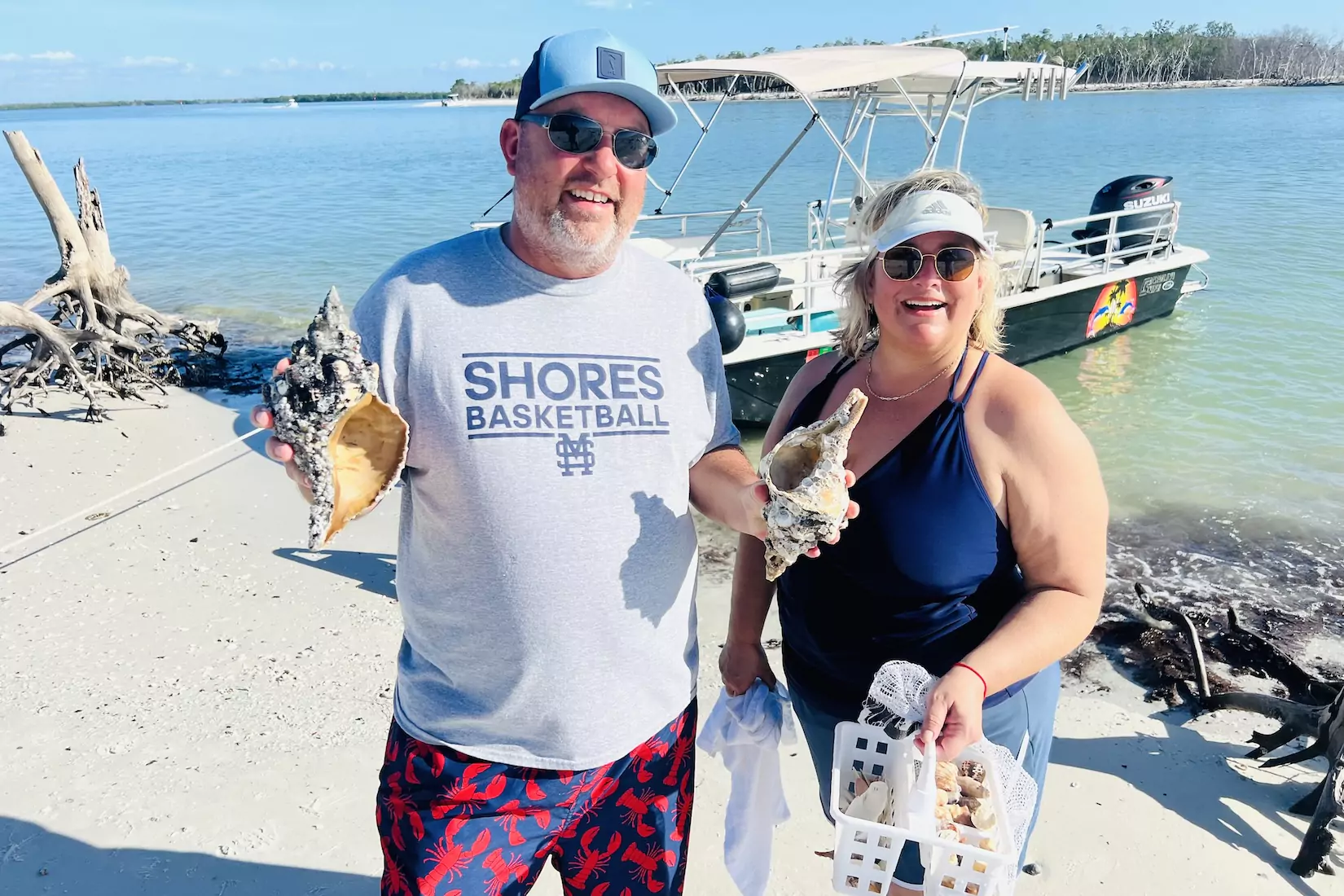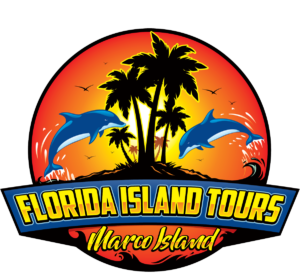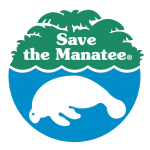Kice Island Shelling: How to Reach the Good Shells
Kice Island Shelling rewards families who time tides, read wind, and move with purpose. This guide shows how to reach the good stuff without stress.
Why Kice Island Shelling Captivates Families
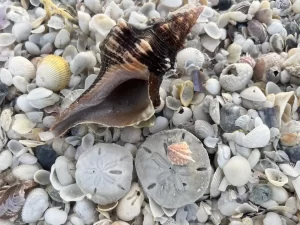
Families love the mix of calm flats and quick Gulf access. Kids can wade in clear, shallow water. Grandparents can stroll on firm sand with plenty to see. Everyone wins when you know where the piles form.
Getting There the Simple Way
We depart from Florida Island Tours’ private dock in Goodland. Parking stays easy, and loading kids and gear takes minutes. The ride to Kice runs through protected water, so it stays comfortable most days.
Because conditions change, we adjust the landing spot daily. That choice puts you on fresher lines faster. Shorter walking means more collecting and less herding.
The Tides That Reveal the Good Stuff
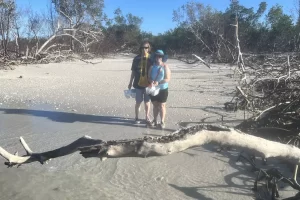
Morning windows usually deliver the best clarity. Summer dawn often brings glassy, shallow water. Winter and early spring fronts reset lines and stack fresh finds. We target the best two-hour window for each family.
Kice Island Shelling: Reading Wind Like a Local
Wind shapes where shells land and stay. A day’s wind creates lee sides that protect piles from wave energy. The lee side keeps shells in place while the windward edge cleans them.
Because of this, we start on the protected face of points and coves. Then we sweep toward current seams that behave like conveyor belts. Those seams hold heavier shells that resist motion.
Where Shells Accumulate on Kice Island
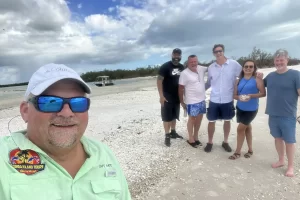
Wrack lines mark where energy meets resistance on each tide. Look for double or triple lines along the high berm. The inside edges of lagoons also trap lighter shells and mini piles.
The South-End Blind Pass “Elbow”
The south tip often forms a bar-and-elbow pattern. The inside bend builds micro-piles after each tide change. We work that elbow slow and steady. We watch for gleaming whites and banded browns in the surge.
Interior Bars and Quiet Lanes
Interior sand lanes hold small “rivers” of shells. You can spot them by a faint shimmer in the ripple field. Kneel, let water pass through your fingers, and feel for shape and weight. Slow hands find the best pieces.
How to be a Pro while Kice Island Shelling, Even With Kids
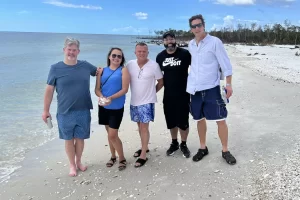
Encourage kids to shuffle and look for patterns, not single pieces. Teach them to check both sides of a line. Good piles repeat every several steps down the beach.
Sand Dollars at Kice: Gentle, Ethical, and Memorable
Families visit Kice for sand dollars, and the flats deliver. These urchins favor firm ripple fields near gentle flow. After calm nights, they rest half-buried and easy to spot.
Always check for life. A living sand dollar feels bristly or velvety. Small spines move, and the color looks darker. Please admire and release live ones. We want tomorrow’s families to share the same joy.
Kice Island Shelling Ethics That Keep Kice Thriving
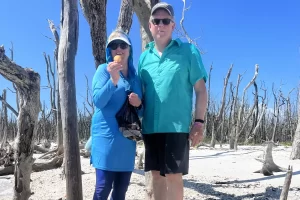
On land and water, we tread lightly around nesting birds and rookeries. We also keep a respectful distance from dolphins and manatees. That care creates better wildlife moments for kids.
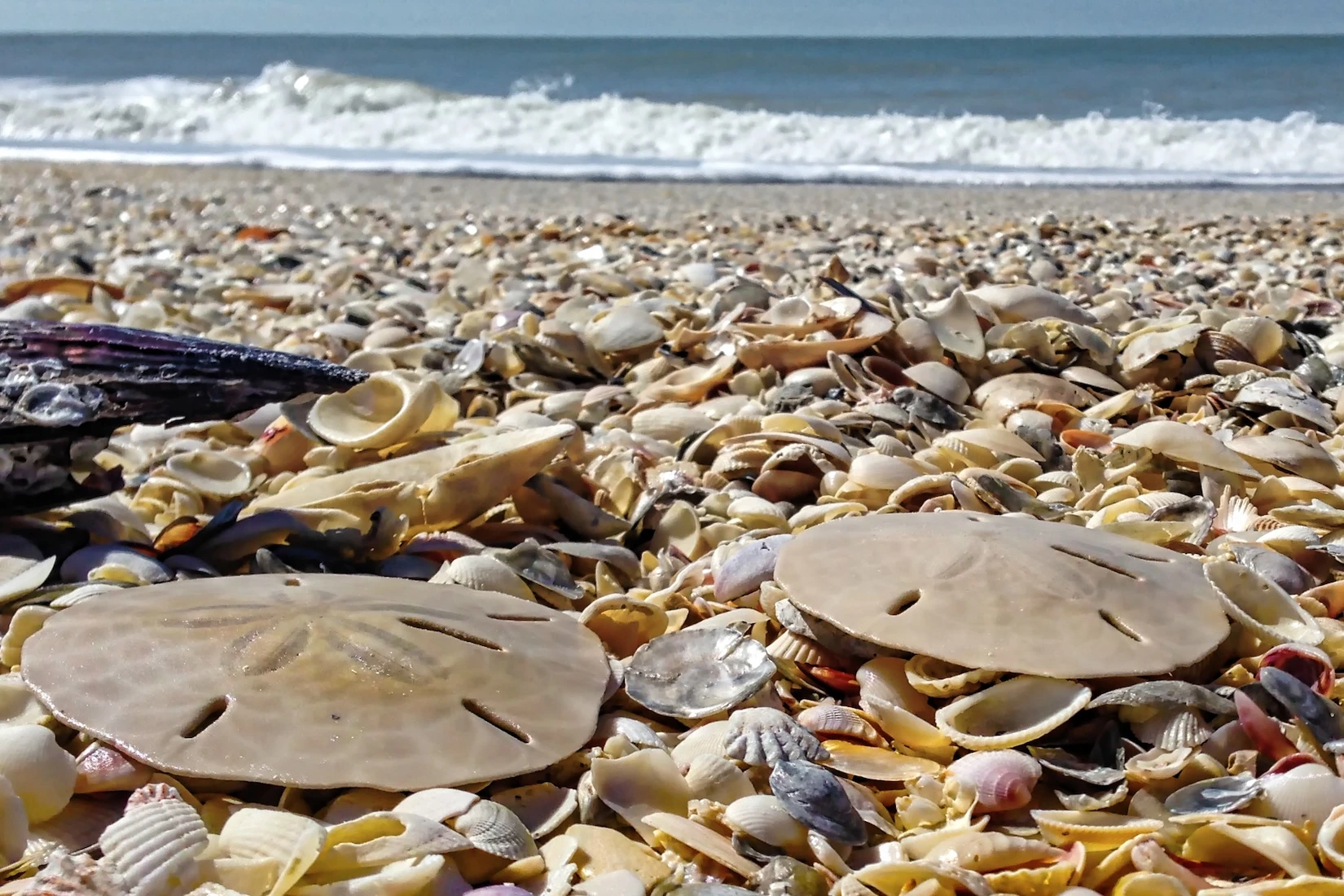
Florida Island Tours’ Barrier Island Shelling Tour delivers a true treasure hunt on quiet, wild shores. We motor past crowded beaches to secluded Ten Thousand Islands sandbars and points. There, shifting tides uncover premium lines loaded with possibilities. Expect chances at sand dollars, alphabet cones, lightning whelks, and, with luck, a Junonia.
2.5 hours: $125 Tickets | $625 Private
What to Bring Without Overpacking
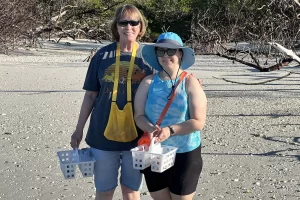
We supply mesh bags and a cooler with ice. We also carry extra water and kid-size life jackets. You focus on fun while we handle the small stuff.
Safety That Feels Easy and Natural
Calm backwaters make the ride smooth most days. We avoid busy channels when we can. We also land where walking stays short and firm.
Teach kids the stingray shuffle in warm months. Shuffle feet, don’t step down hard. That habit matters in very shallow water. It also slows everyone down, which helps you spot more shells.
Our Favorite Kice Island Shelling Route
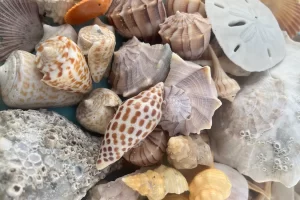
Next, we slide to a nearby interior bar that collects heavier shells. Finally, we finish at a smaller lagoon for easy wading. That three-stop flow fits most families and attention spans.
How We Plan Around Weather and Tides
The wind shifts by the hour. Tide height is tracked against local bar elevations. We mark where shell piles formed the week before.
Because of that, we can pivot quickly when a breeze goes sideways. A ten-minute move can triple your finds. Smart routing beats stubborn plans every time.
What You’ll Likely Find on Kice Island Shelling
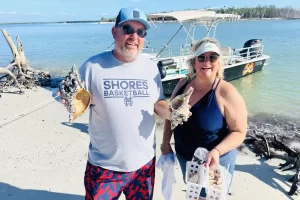
Olives and scallops sprinkle the whole area. Sand dollars dot the flats on calm mornings. A Junonia remains rare but always possible. Hope keeps kids engaged and scanning.
Teaching Kids to Spot “Shell Signs”
Kids love patterns when you frame them nicely. Show them how color repeats in bands. Ask them to find where the two ripple directions meet. That junction often hides the goods.
Set a quiet pace and celebrate small wins early. Confidence grows when a child finds an olive or a cone. Success builds patient hunters, which multiplies your finds.
When Kice Isn’t Perfect, We Pivot

We move to the spot with the best clarity and flow for the hour. That flexibility makes a normal day feel like a lucky day.
How Long to Plan for Kice Island Shelling
Most families thrive with 90 minutes to two hours ashore. That window balances attention spans, hydration, and sun. It also hits one clean tidal moment without rushing.
If energy stays high, we extend the time a little. We always match the pace to your group. Comfort ensures happy collecting and brighter memories.
Packing and Post-Trip Care
Rinse shells with clean water and let them dry thoroughly. Keep sand dollars safe in a rigid container. Wrap fragile pieces with a soft towel.
Label your favorites with location and date for the kids. Those notes turn shells into story starters at home. Memories deepen when you remember the moment and place.
The Florida Island Tours Difference
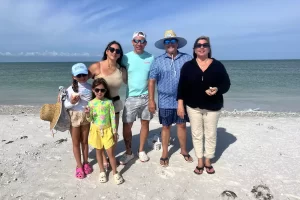
We carry the right gear and keep groups small. At your pace, we design routes around kids, naps, snacks, and moods. Your family’s day sets the plan.
Kice Island Shelling: Fun Fact
Sand dollars are flattened sea urchins with a five-petal design. Those “petals” are tiny channels that help them breathe and move.
Kice Island Shelling: Captain’s Tip
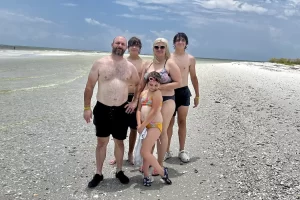
Planning Your Kice Island Shelling Day
Start with a morning window and flexible minds. Watch the forecast for gentle winds and clear water. Aim for a falling or early-rising tide.
Let us know your children’s ages and what excites them the most. We will build a route that keeps them engaged. We will handle logistics while you collect memories.
Kice Island Shelling: Ready to Reach the Good Shells?

Book a guided shelling tour with Florida Island Tours from our private Goodland dock. We will bring mesh bags, cold ice, and a calm plan. You bring curiosity and a pocket for stories.
See you at the dock. The water is clear, the bars are setting, and your family’s best beach day is waiting.
— Florida Island Tours 🌴🐬
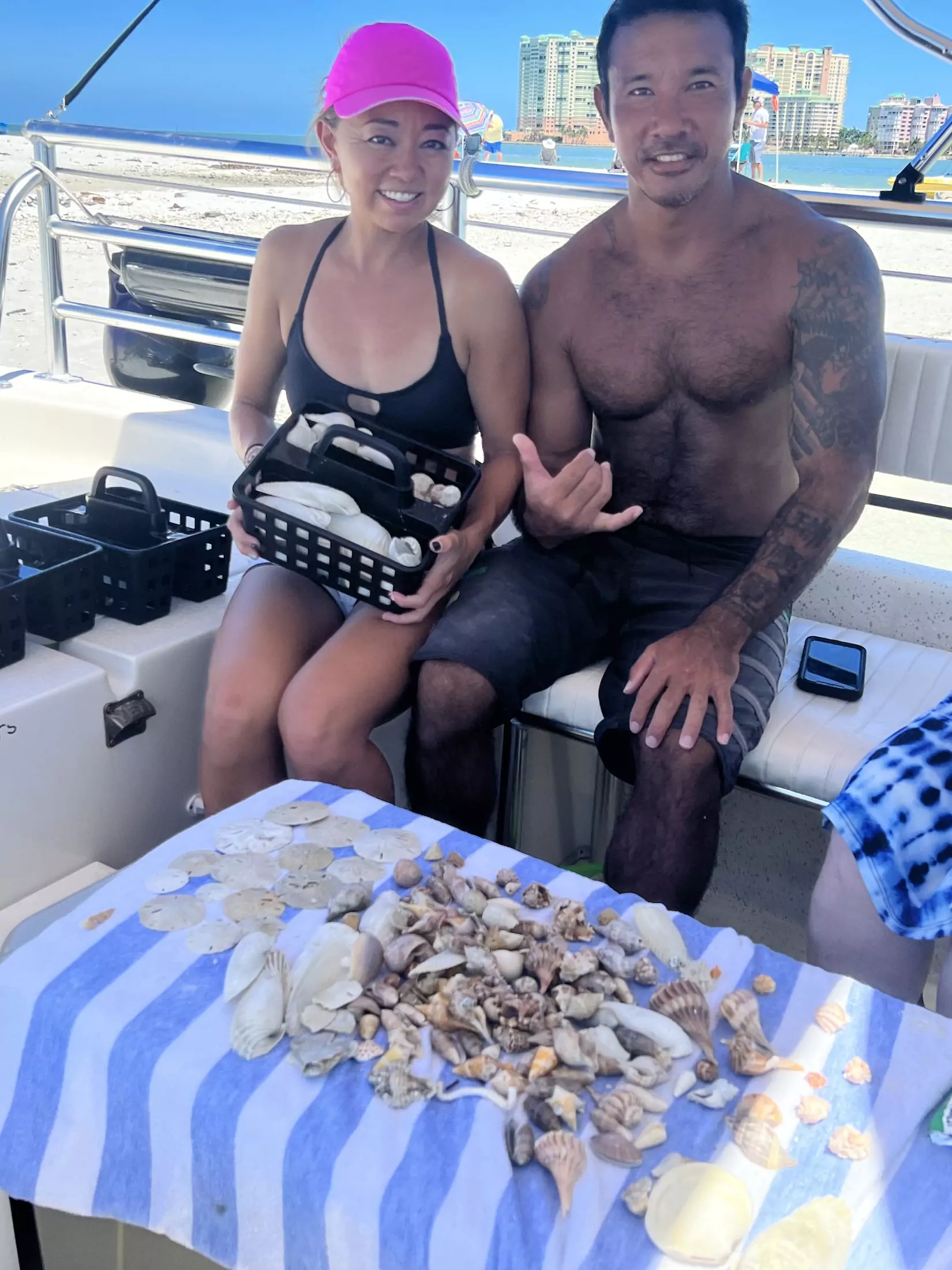
”Found the most amazing shells! My girlfriend and I came all the way from Hawaii to go shelling in world famous kice island and were not disappointed! Went on a 4 hour shelling tour this morning with captain Nate and found the most amazing shells! He also went out of his way to find a few rare shells to give us to make sure we didn’t go home empty handed even though the islands were loaded with great shells! One of the highlights for us was that we really wanted to find sand dollars and at the last place he took us, we found two sand dollars but even more, he went out on his own and found a bunch and gave them all to us! Definitely Recommend this shelling tour company and captain Nate! You won’t be disappointed!
Scott Z.Maui, Hawaii
Kice Island Shelling FAQ
Where do tours depart, and is parking easy?
Trips leave from Florida Island Tours’ private dock in Goodland. Parking is simple, free, and close to the boat.
How long is a typical Kice Island shelling tour?
Plan for two to three hours dock to dock. That window hits the best tide without rushing families.
What tide is best for finding the good stuff?
A falling tide exposes bars and fresh lines. Early rising water can float hidden gems to your feet.
How does wind affect shelling, and what do you adjust?
Wind sets the leeward sides that hold piles. We choose protected faces and seams, then pivot as conditions change.
Is this tour suitable for kids and grandparents?
Yes. Calm routes, short walks, and steady pacing keep everyone comfortable. Captains tailor stops to attention spans.
Will we find sand dollars, and how do we handle them?
Calm mornings often reveal sand dollars on firm flats. Fuzzy or bristly means alive—admire and release gently.
Which shells show up most on Kice?
Expect olives, fighting conchs, scallops, and lightning whelks. Alphabet cones and banded tulips appear along current seams.
What should we bring?
Pack water, reef-safe sunscreen, a hat, and sunglasses. Water shoes with grip help on ripple fields.
What gear do you provide?
We supply mesh shelling bags, kid-size life jackets, and a cooler with ice.
How much walking is involved?
Usually a short, firm-sand stroll to active lines. We choose landings that minimize carrying gear and wrangling kids.
Are there bathrooms?
Restrooms sit near the dock. Beaches on Kice are natural, so plan a pre-departure stop.
How do you handle safety on the flats?
Everyone learns the stingray shuffle in warm months. Slow shuffling protects feet and improves shell spotting.
Can pregnant guests or those with limited mobility join?
Often, yes. Gentle routes and short walks help. Please tell us your needs in advance so we can plan.
Are wildlife sightings guaranteed?
Wildlife is wild, so nothing is guaranteed. Smart timing and quiet approaches boost your odds significantly.
What happens if Kice isn’t ideal that day?
We pivot to clearer bars nearby, including “Second Chance” Shell Island or interior lanes. Flexibility wins the day.
What is your policy on live shells and marine life?
We never keep live shells. Live sand dollars, starfish, urchins, and sea whips stay in the water.
When is the best season or time of day?
Fall tropical weather, Winter fronts, and early spring resets stack fresh shells. Summer dawns bring clear, calm water for easy spotting. There really is great shelling year round on Kice Island
Mornings are the best time of the day to go shelling, along with at low tide of course! Tides change daily. We can help you decide the best time of day to go if you call us to book your shelling tour.
Can we extend our time if everyone’s having fun?
This can sometimes be possible on private tours. If schedules and tides allow, we add time on the spot.
Do you limit group size?
Small groups maintain a calm and personal experience. That size also helps kids learn faster.
What’s the plan if the weather turns?
Safety first, always. We reroute, reschedule, or refund according to our conditions and forecasts. Your captain will decide on the dock.
Ready to Go Shelling on Kice Island?
Ready to reach the good stuff on Kice? With the right tide, calm routes, and smart wind reads, your family finds more with less effort. We handle timing, gear, and a simple plan from our private Goodland dock. You bring curiosity, sunscreen, and a pocket for stories. Together, we’ll collect memories, respect wildlife, and leave the beach better than we found it. Book your Kice Island shelling tour with Florida Island Tours, and let the treasure hunt begin.



